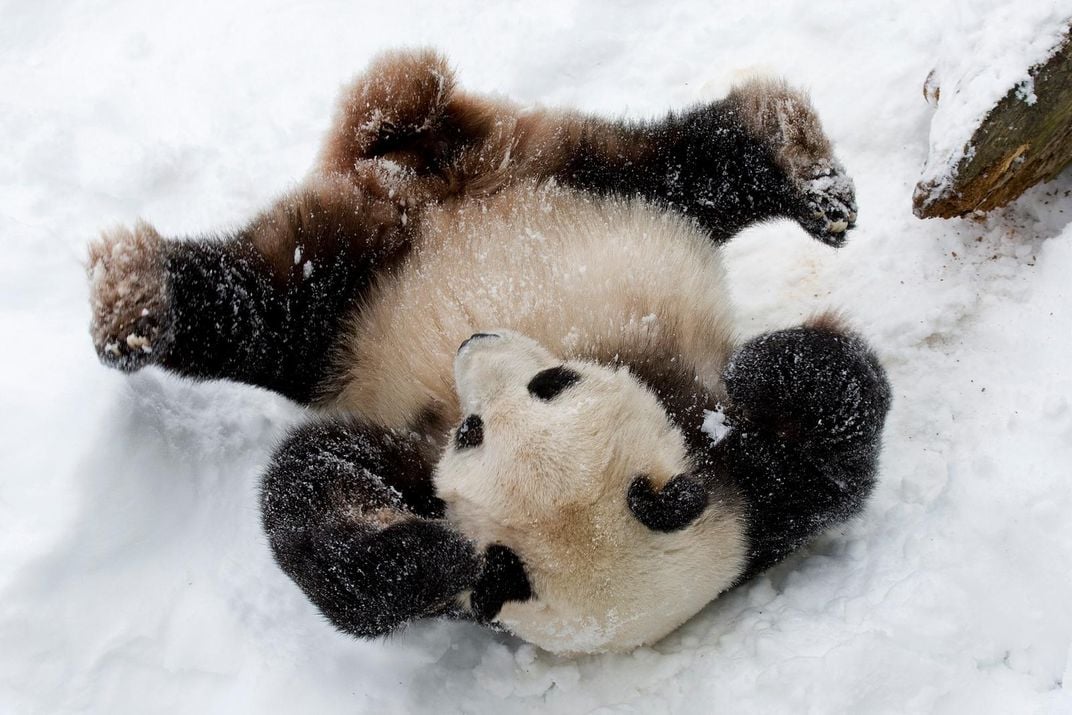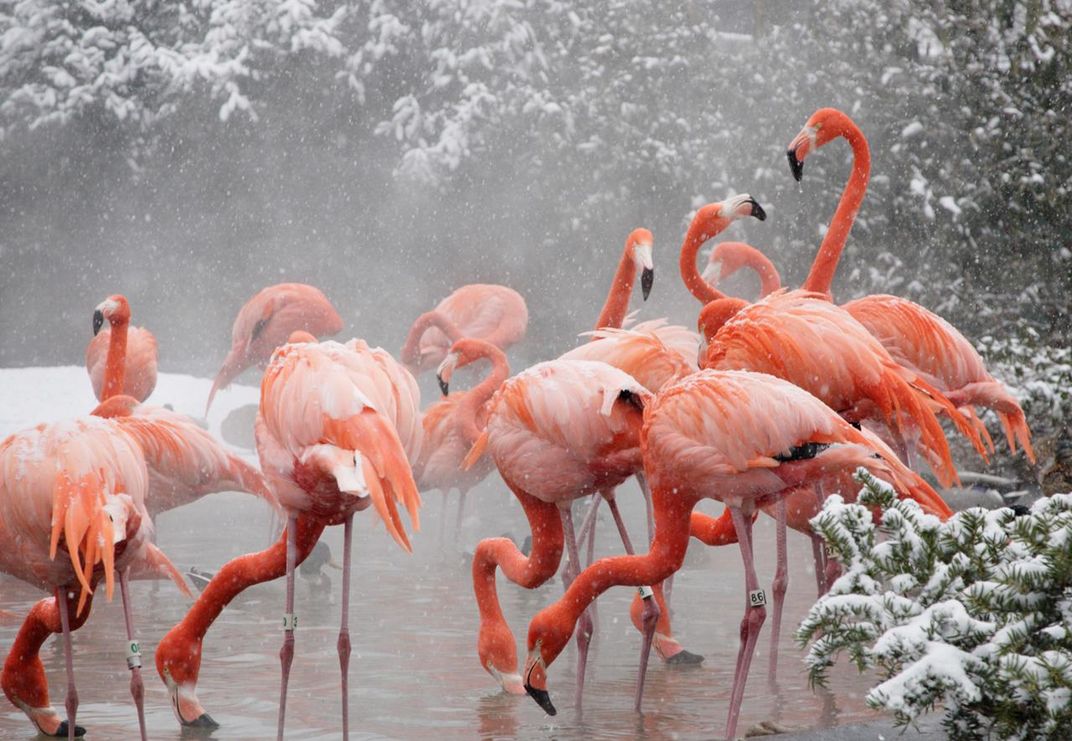How Zoo Animals Stay Safe and Warm in the Arctic Blast
From flamingo ‘hot tubs’ to heated termite mounds, zoos have plenty of tricks to keep creatures safe when the forecast freezes over
/https://tf-cmsv2-smithsonianmag-media.s3.amazonaws.com/filer/75/b7/75b74050-7eee-41f7-a462-cb3f2c435d15/8290930105_48589177b1_o.jpg)
This week, a frosty "bomb cyclone" struck states along the U.S. East Coast, bringing frigid temperatures, wind gusts up to 60 miles per hour, and buckets of snow and sleet as far south as Florida. There have already been at least 11 deaths due to cold-related causes. But lethal weather doesn’t only threaten humans—zoos along the storm's path have also been bracing for the deep freeze. Temperatures in Canada were so low this week (dipping to below -18 degrees Farenheit) that the Calgary Zoo brought their hardy penguins inside to protect them against the chill.
Fortunately, there are plenty of measures zoos can take to keep their animals safe in foul winter weather, from extra blankets to flamingo 'hot tubs,' explains Bryan Amaral, senior curator of animal care sciences at Smithsonian's National Zoo. One of the biggest safeguards in case of heavy snow is what he calls "ride-out crews," groups of animal caretakers tasked with staying overnight at the zoo to ensure that someone will be available on site if the roads become treacherous.
"We make due with what we have," says Amaral. "In my office I have a cot, and we'll bring in sleeping bags and overnight bags. It's like camping, but inside."
Of course, the level of preparedness measures zoos put in place depends on the severity of the weather. For now, D.C. isn't directly in the path of the worst winter weather, with only a dusting of snow promised over the next few days. But temperatures are dipping to the teens overnight, which means it's important to ensure that animals remain comfy.
Overall, "it's all pretty routine stuff that you may do for your kids or your pets at home," says Amaral. "You know, extra layers on the way to the bus stop or limited time outdoors for your dog." And although most animals at the Zoo are chosen for their ability to thrive in typical D.C. conditions, each has a different tolerance of the cold.
For the giant pandas, the cold snap—and particularly the potential snow—is a welcome change. Native to the frosty western Chinese mountains, pandas thrive in the cold weather. "I can't think of a temperature [we'd have in D.C.], when we wouldn't give them access outside, at least for a period of time," says Amaral. Who could forget Tian Tian, one of National Zoo's pandas, joyfully romping in the freshly fallen snow?

The bison are also built to thrive in the cold, but they struggle to walk on thick sheets of ice, explains Amaral. "Bison are what we call cloven-hoofed animals, they have two toes on each foot much like a cow would have," he explains. "That doesn't offer as much traction." To help prevent slippage in icy conditions, the runways that connect their yard to the indoor spaces has what Amaral describes as "fancy subterranean heating," which helps melt away the ice.
Other creatures also need a slight boost. For example, many lions and tigers do just fine outside, but their heated rock dens give them a little respite from the cold. Similarly, the cheetahs have heated termite mounds throughout their enclosure. The flamingos have a heated pool, which helps keep them stay comfortable even if the snow is falling. But the latest cold that descended on the coast has forced them inside this week. For some, like the orangutans, a few extra blankets to snuggle with at night helps do the trick.

More concerning are non-native reptiles and other cold-blooded animals, like the Komodo dragons, who rely on a steady supply of sunlight to heat their blood and lack mechanisms to deal with the cold. Tiny mammals like the ring-tailed lemurs and the guenons monkeys also struggle to maintain body heat. "Those are the ones we worry about the most," says Amaral. Such "low body mass" animals will be brought inside during frosty weather.
Some zoos try to keep extra food on hand through the winter in case weather prevents new shipments of munchies. But with an impending storm, says Amaral, the zoo will also have the animal commissary prepare meals for all the creatures ahead of time and deliver them to the various areas to make distribution less treacherous. For D.C. at least, such intense measures are not yet required.
"The main thing is just making sure that we're able to follow our temperature guidelines," says Amaral. The National Zoo has a system alarms and remote access to park thermometers to alert them of dangerous temperature drops and allow appropriate adjustments. And in the chilly recent temperatures, the zoo has begun the standard process of moving some of the animals into the warm enclosures.
What do the animals think about all this? "A lot of the animals are pretty bright," says Amaral. "So while they won't want to be inside on one particular day, on a day when it's cold I think they absolutely understand where it's warm and they're happy to be there."
/https://tf-cmsv2-smithsonianmag-media.s3.amazonaws.com/accounts/headshot/Wei-Haas_Maya_Headshot-v2.png)
/https://tf-cmsv2-smithsonianmag-media.s3.amazonaws.com/accounts/headshot/Wei-Haas_Maya_Headshot-v2.png)